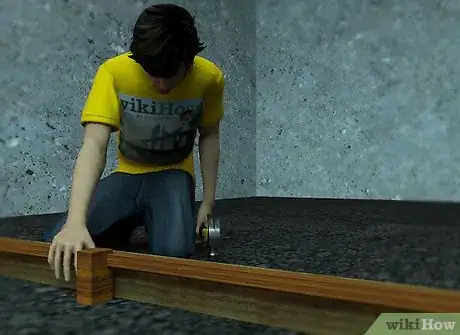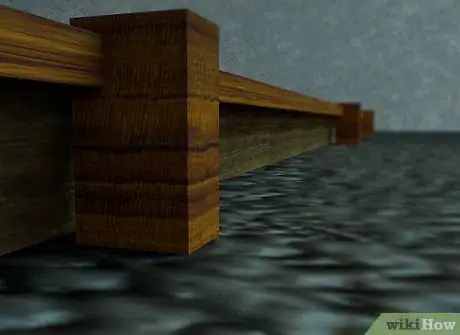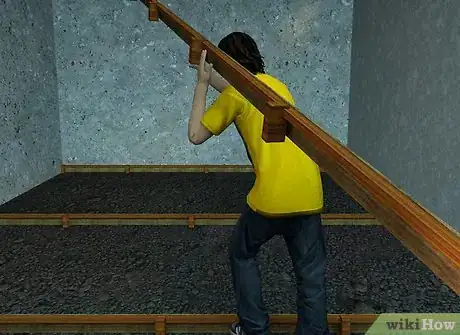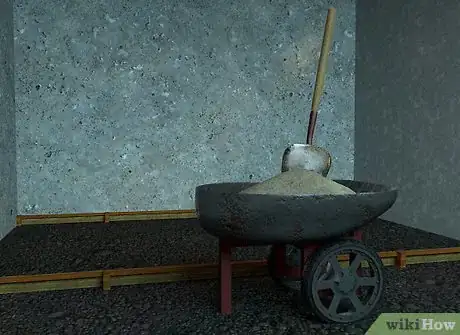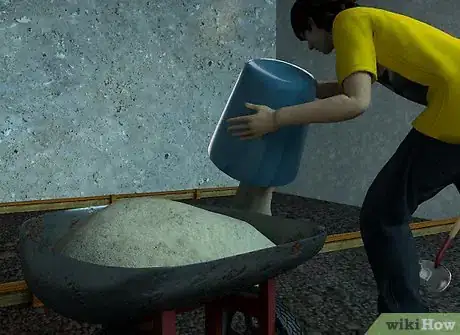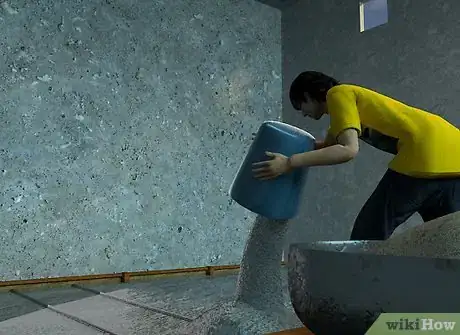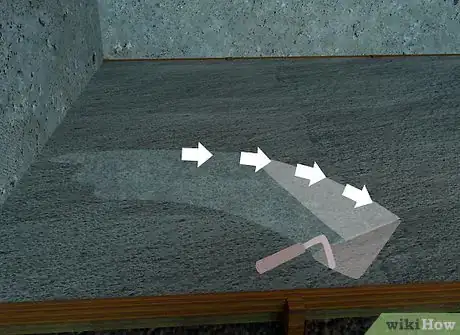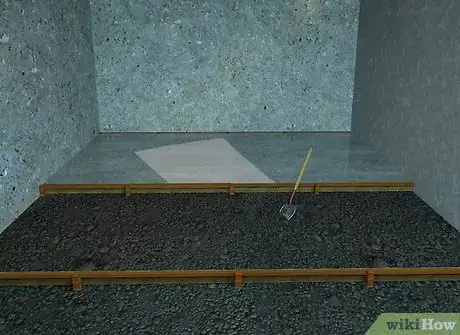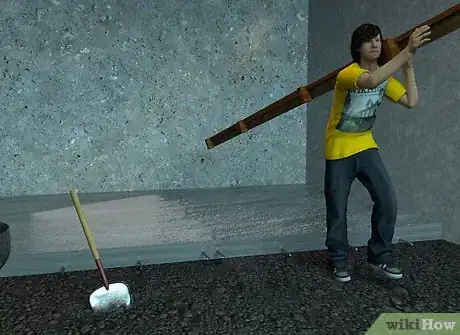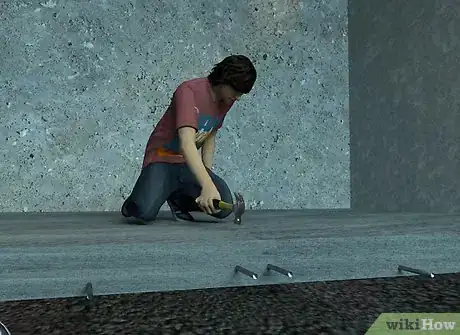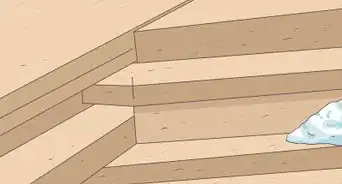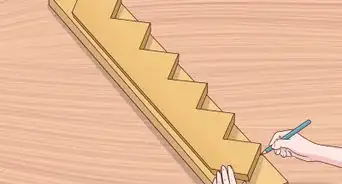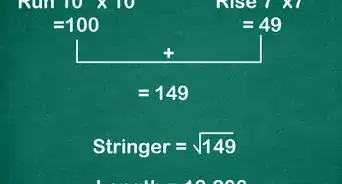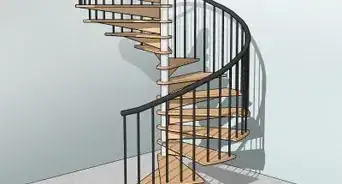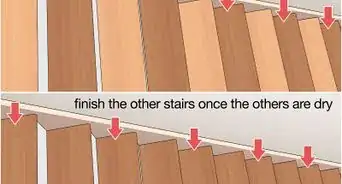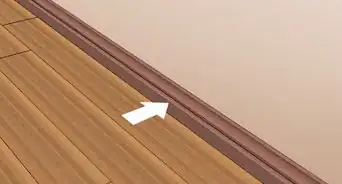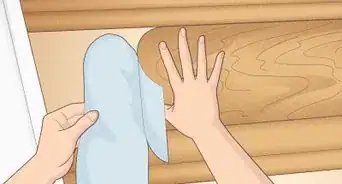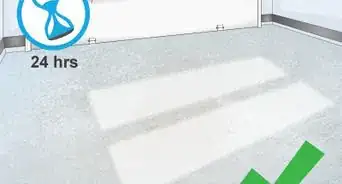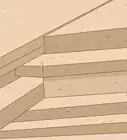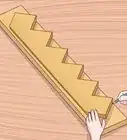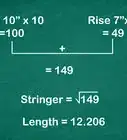X
wikiHow is a “wiki,” similar to Wikipedia, which means that many of our articles are co-written by multiple authors. To create this article, volunteer authors worked to edit and improve it over time.
This article has been viewed 88,677 times.
Learn more...
Given that garages usually house dirty cars, tools and other household items, many homeowners choose to floor their garages with simple cement. Taking a weekend to learn how to pour a garage floor is an easy process that will provide you with an even, sturdy floor for years to come. With few materials and a simple process, you can quickly have the utilitarian, good-looking garage floor you've always wanted.
Steps
-
1Build a frame for your garage floor.
- Your frame will keep in the cement fix and delimit the area of your floor. Use four simple wooden boards pushed against the walls of the garage and secured either by weights or nailed together.
-
2Even out the garage floor by removing any debris and evening out any irregularities in the surface using a trowel or other tools.Advertisement
-
3Place the frame on the floor.
-
4Mix the concrete in your wheelbarrow.
-
5Pour the concrete mix slowly and evenly over the floor. This is best done from the end of the wheelbarrow, evening with the trowel as you move along. Pour 3 inches (or 5 cm).
-
6Place the steel rods or rebar around the edges of the freshly poured concrete mix and through the middle of your floor if working with a large area.
- These bars will provide strength to the concrete. Have the bars prepared before pouring. Allowing the concrete to dry too much between pours will create layers and make the concrete weaker. To attain an even floor, pouring slowly and evenly.
-
7Continually even the cement with a trowel. Go as high as you wish your floor to be.
-
8Smooth over the surface of the cement with your trowel after pouring. Ensure an even floor by checking that there are no air pockets or pools of cement in the corners.
-
9Let the floor dry for at least a day. Check that no air bubbles or other irregularities form.
-
10Remove the frame once the floor is dry and you can easily lift the boards. If the boards are hard to lift, let the floor sit for another day.
-
11Step on and use the floor only once it is completely dry. Tap the surface with a boot or a hammer to make sure it is solid and free of cracks.
Advertisement
Community Q&A
-
QuestionDo I need plastic between the gravel and concrete?
 Community AnswerYes, 6-mil minimum. Concrete is not only porous (it's a sponge), but it's colder than the ground because its thermal retention isn't as good as dirt, clay, sand or what have you. You really need to stop ground moisture and its condensation against the concrete to stay away in order to be dry, mold-free and rot-free on any wood, cardboard, carpet or metal above the floor.
Community AnswerYes, 6-mil minimum. Concrete is not only porous (it's a sponge), but it's colder than the ground because its thermal retention isn't as good as dirt, clay, sand or what have you. You really need to stop ground moisture and its condensation against the concrete to stay away in order to be dry, mold-free and rot-free on any wood, cardboard, carpet or metal above the floor. -
QuestionHow much gravel should be under a 4" thick garage floor?
 Community AnswerIt can depend on the type of soil you have. For sandy soil, 2" of gravel would be good. But on clay or loam soil, that doesn't drain well, a 6" or 8" gravel base would be needed.
Community AnswerIt can depend on the type of soil you have. For sandy soil, 2" of gravel would be good. But on clay or loam soil, that doesn't drain well, a 6" or 8" gravel base would be needed. -
QuestionI have a 5 x 3 and 3 ft hole I need to fill in my garage. Do I fill the hole with bricks as well?
 Joshua PigeonCommunity AnswerSince you likely need to dig down to level the the ground and to make room for your gravel base, you can fill it with the soil. And if the hole is still there, you can fill it with gravel. Ensure the hole is packed solid as well.
Joshua PigeonCommunity AnswerSince you likely need to dig down to level the the ground and to make room for your gravel base, you can fill it with the soil. And if the hole is still there, you can fill it with gravel. Ensure the hole is packed solid as well.
Advertisement
Warnings
- Make sure to pour slowly, evening with a trowel as you go, and pouring less than you think you need.⧼thumbs_response⧽
Advertisement
Things You'll Need
- Concrete mix
- Wheelbarrow
- Four large boards
- Metal rods or rebar
- Trowel
- Gloves
About This Article
Advertisement
